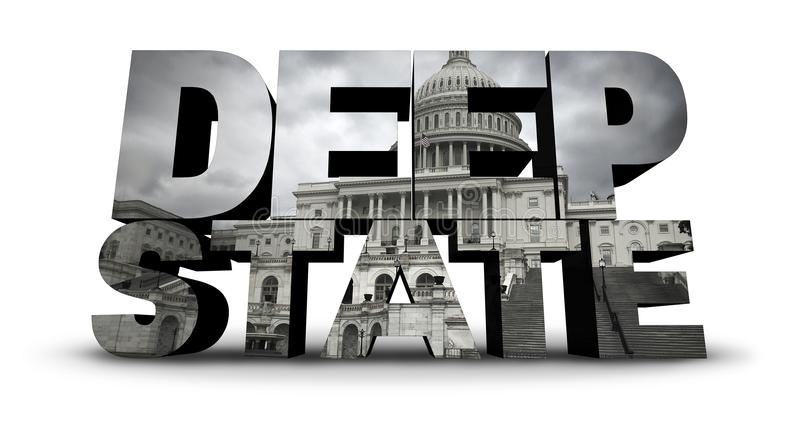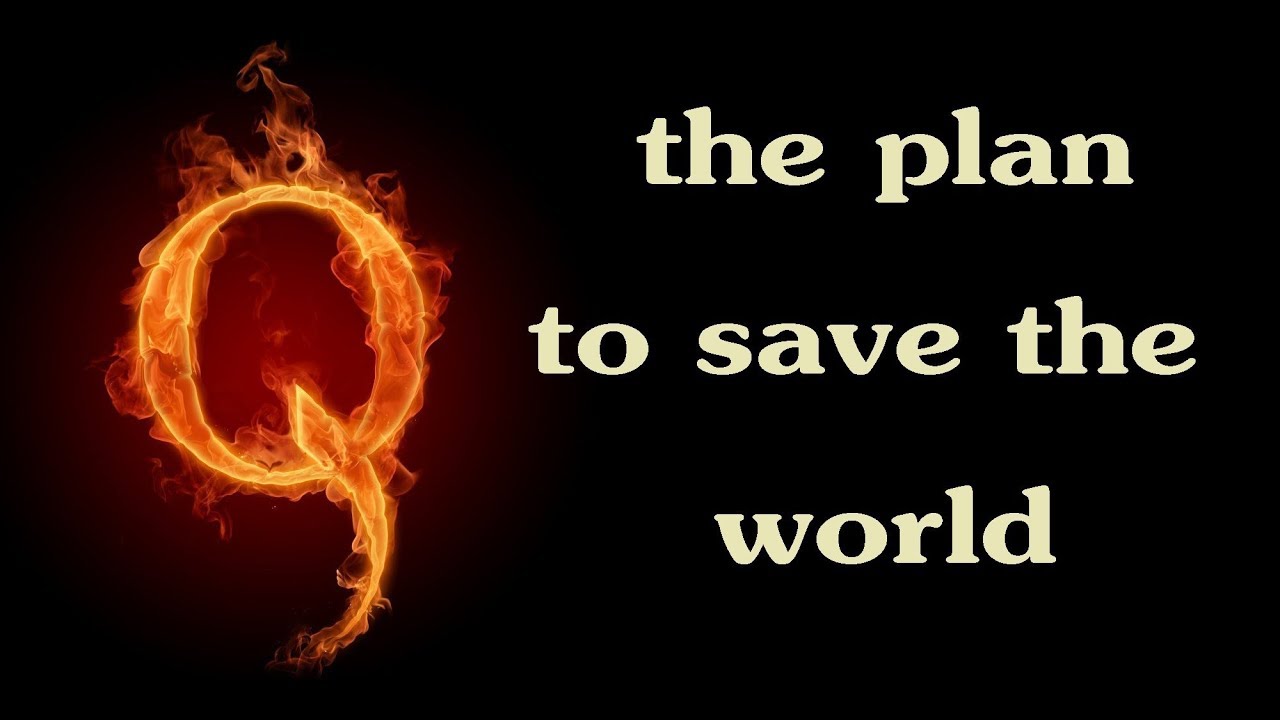| Aired: October 21st, 2014 – New York City Document 54 pages – Lock Step – Read page 19 E X C E R P T S – B E L O W An economically unstable and shock-prone world in which governments weaken, criminals thrive, and dangerous innovations emerge . . . An economically depressed world in which individuals and communities develop localized, “makeshift” solutions to a growing set of problems . . . One important—and novel—component of our strategy toolkit is scenario planning, a process of creating narratives about the future based on factors likely to affect a particular set of challenges and opportunities. We believe that scenario planning has great potential for use in philanthropy to identify unique interventions, simulate and rehearse important decisions that could have profound implications, and highlight previously undiscovered areas of connection and intersection. Most important, by providing a methodological structure that helps us focus on what we don’t know—instead of what we already know—scenario planning allows us to achieve impact more effectively. The Rockefeller Foundation’s use of scenario planning to explore technology and international development has been both inspired and ambitious. Throughout my 40-plus-year career as a scenario planner, I have worked with many of the world’s leading companies, governments, foundations, and nonprofits—and I know firsthand the power of the approach. Scenario planning is a powerful tool precisely because the future is unpredictable and shaped by many interacting variables. Finally, a note about what we mean by “technology.” In this report, we use the term to refer to a broad spectrum of tools and methods of organization. Technologies can range from tools for basic survival, such as a treadle pump and basic filtration technologies, to more advanced innovations, such as methods of collecting and utilizing data in health informatics and novel building materials with real-time environmental sensing capabilities. The Rockefeller Foundation and GBN began the scenario process by surfacing a host of driving forces that would affect the future of technology and international development. These forces were generated through both secondary research and in-depth interviews with Foundation staff, Foundation grantees, and external experts. Two uncertainties from a longer list of potential uncertainties that might shape the broader contextual environment of the scenarios, including social, technology, economic, environmental, and political trends. Bottom-up and top-down. Lower levels of adaptive capacity emerge in the absence of these characteristics and leave populations particularly vulnerable to the disruptive effects of unanticipated shocks. Once crossed, these axes create a matrix of four very different futures: LOCK STEP – A world of tighter top-down government control and more authoritarian eadership, with limited innovation and growing citizen pushback CLEVER TOGETHER – A world in which highly coordinated and successful strategies emerge for addressing both urgent and entrenched worldwide issues HACK ATTACK – An economically unstable and shock-prone world in which governments weaken, criminals thrive, and dangerous innovations emerge SMART SCRAMBLE – An economically depressed world in which individuals and communities develop localized, makeshift solutions to a growing set of problems Each scenario tells a story of how the world, and in particular the developing world, might progress over the next 15 to 20 years. We now invite you to immerse yourself in each future world and consider four different visions for the evolution of technology and international development to 2030. Rockefeller Plan to Use Bioweapons to Impose Martial Law One Quarantine at a Time. Page 18 LOCK STEP A world of tighter top-down government control and more authoritarian leadership, with limited innovation and growing citizen pushback In 2012, the pandemic that the world had been anticipating for years finally hit. Unlike 2009’s H1N1, this new influenza strain—originating from wild geese—was extremely virulent and deadly. Even the most pandemic-prepared nations were quickly overwhelmed when the virus streaked around the world, infecting nearly 20 percent of the global population and killing 8 million in just seven months, the majority of them healthy young adults. The pandemic also had a deadly effect on economies: international mobility of both people and goods screeched to a halt, debilitating industries like tourism and breaking global supply chains. Even locally, normally bustling shops and office buildings sat empty for months, devoid of both employees and customers. The pandemic blanketed the planet—though disproportionate numbers died in Africa, Southeast Asia, and Central America, where the virus spread like wildfire in the absence of official containment protocols. But even in developed countries, containment was a challenge. The United States’s initial policy of “strongly discouraging” citizens from flying proved deadly in its leniency, accelerating the spread of the virus not just within the U.S. but across borders. However, a few countries did fare better—China in particular. The Chinese government’s quick imposition and enforcement of mandatory quarantine for all citizens, as well as its instant and near-hermetic sealing off of all borders, saved millions of lives, stopping the spread of the virus far earlier than in other countries and enabling a swifter post- pandemic recovery. China’s government was not the only one that took extreme measures to protect its citizens from risk and exposure. During the pandemic, national leaders around the world flexed their authority and imposed airtight rules and restrictions, from the mandatory wearing of face masks to body-temperature checks at the entries to communal spaces like train stations and supermarkets. Even after the pandemic faded, this more authoritarian control and oversight of citizens and their activities stuck and even intensified. In order to protect themselves from the spread of increasingly global problems—from pandemics and transnational terrorism to environmental crises and rising poverty—leaders around the world took a firmer grip on power. At first, the notion of a more controlled world gained wide acceptance and approval. Citizens willingly gave up some of their sovereignty—and their privacy—to more paternalistic states in exchange for greater safety and stability. Citizens were more tolerant, and even eager, for top-down direction and oversight, and national leaders had more latitude to impose order in the ways they saw fit. In developed countries, this heightened oversight took many forms: biometric IDs for all citizens, for example, and tighter regulation of key industries whose stability was deemed vital to national interests. In many developed countries, enforced cooperation with a suite of new regulations and agreements slowly but steadily restored both order and, importantly, economic growth. Across the developing world, however, the story was different—and much more variable. Top-down authority took different forms in different countries, hinging largely on the capacity, caliber, and intentions of their leaders. More authoritarian leadership worked less well—and in some cases tragically—in countries run by irresponsible elites who used their increased power to pursue their own interests at the expense of their citizens. There were other downsides, as the rise of virulent nationalism created new hazards. By 2025, people seemed to be growing weary of so much top-down control and letting leaders and authorities make choices for them. Wherever national interests clashed with individual interests, there was conflict. Sporadic pushback became increasingly organized and coordinated, as disaffected youth and people who had seen their status and opportunities slip away—largely in developing countries—incited civil unrest. In 2026, protestors in Nigeria brought down the government, fed up with the entrenched cronyism and corruption. Even those who liked the greater stability and predictability of this world began to grow uncomfortable and constrained by so many tight rules and by the strictness of national boundaries. The feeling lingered that sooner or later, something would inevitably upset the neat order that the world’s governments had worked so hard to establish. • “IT IS POSSIBLE TO DISCIPLINE AND CONTROL SOME SOCIETIES FOR SOME TIME, BUT NOT THE WHOLE WORLD ALL THE TIME.” – GK Bhat, TARU Leading Edge, India _____________________________________________________________ Scenario Narratives LOCK STEP HEADLINES IN LOCK STEP Quarantine Restricts In-Person Contact; Cellular Networks Overloaded (2013) Vietnam to Require ‘A Solar Panel on Every Home’ (2022) African Leaders Fear Repeat of Nigeria’s 2026 Government Collapse (2028) 5Intercontinental Trade Hit by Strict Pathogen Controls (2015) Italy Addresses ‘Immigrant Caregiver’ Gap with Robots (2020) Will Africa’s Embrace of Authoritarian Capitalism a la China Continue? (2025) Proliferating Trade Networks in Eastern and Southern Africa Strengthen Regional Ties (2023) Page 22 Many governments will place severe restrictions on the program areas and geographies that international philanthropies can work in, leading to a narrower and stronger geographic focus or grant-making in their home country only. Technological innovation in “Lock Step” is largely driven by government and is focused on issues of national security and health and safety. Most technological improvements are created by and for developed countries, shaped by governments’ dual desire to control and to monitor their citizens. Technology trends and applications we might see: Scanners using advanced functional magnetic resonance imaging (fMRI) technology become the norm at airports and other public areas to detect abnormal behavior that may indicate “antisocial intent.” In the aftermath of pandemic scares, smarter packaging for food and beverages is applied first by big companies and producers in a business-to-business environment, and then adopted for individual products and consumers. New diagnostics are developed to detect communicable diseases. The application of health screening also changes; screening becomes a prerequisite for release from a hospital or prison, successfully slowing the spread of many diseases. Tele-presence technologies respond to the demand for less expensive, lower- bandwidth, sophisticated communications systems for populations whose travel is restricted. Driven by protectionism and national security concerns, nations create their own independent, regionally defined IT networks, mimicking China’s firewalls. Governments have varying degrees of success in policing internet traffic, but these efforts nevertheless fracture the “World Wide” Web. Page 24 EXAMPLE: It was now 2025. Manisha was 27 years old and a manager for the Indian government’s Ganges Purification Initiative (GPI). Until recently, the Ganges was still one of the most polluted rivers in the world, its coliform bacteria levels astronomical due to the frequent disposal of human and animal corpses and of sewage (back in 2010, 89 million liters per day) directly into the river. Dozens of organized attempts to clean the Ganges over the years had failed. In 2009, the World Bank even loaned India $1 billion to support the government’s multi-billion dollar cleanup initiative. But then the pandemic hit, and that funding dried up. Now in 2020 Many top Indian scientists and engineers had been recruited by the government to develop tools and strategies for cleaning the Ganges in more high-tech ways. Her favorite were the submersible bots that continuously “swam” the river to detect, through sensors, the presence of chemical pathogens. New riverside filtration systems that sucked in dirty river water and spit out far cleaner water were also impressive—especially because on the outside they were designed to look like mini-temples. In fact, that’s why Manisha was at the river today, to oversee the installation of a filtration system located not even 100 feet from where she first stepped into the Ganges as a girl. The water looked so much cleaner now, and recent tests suggested that it might even meet drinkability standards by 2035. Manisha was tempted to kick off her shoe and dip her toe in, but this was a restricted area now—and she, of all people, would never break that law. Page 26 The recession of 2008-10 did not turn into the decades-long global economic slide that many had feared. In fact, quite the opposite: strong global growth returned in force, with the world headed once again toward the demographic and economic projections forecasted before the downturn. India and China were on track to see their middle classes explode to 1 billion by 2020. Mega-cities like Sao Paulo and Jakarta expanded at a blistering pace as millions poured in from rural areas. Countries raced to industrialize by whatever means necessary; the global marketplace bustled. But two big problems loomed. First, not all people and places benefited equally from this return to globalized growth: all boats were rising, but some were clearly rising more. Second, those hell-bent on development and expansion largely ignored the very real environmental consequences of their unrestricted growth. Undeniably, the planet’s climate was becoming increasingly unstable. Sea levels were rising fast, even as countries continued to build-out coastal mega-cities. In 2014, the Hudson River overflowed into New York City during a storm surge, turning the World Trade Center site into a three-foot-deep lake. The image of motorboats navigating through lower Manhattan jarred the world’s most powerful nations into realizing that climate change was not just a developing-world problem. That same year, new measurements showing that atmospheric carbon dioxide levels were climbing precipitously created new urgency and pressure for governments (really, for everyone) to do something fast. International coordination started slowly, then accelerated faster than anyone had imagined. In 2015, a critical mass of middle income and developed countries with strong economic growth publicly committed to leveraging their resources against global-scale problems, beginning with climate change. Together, their governments hashed out plans for monitoring and reducing greenhouse gas emissions in the short term and improving the absorptive capacity of the natural environment over the long term. In 2017, an international agreement was reached on carbon sequestration (by then, most multinational corporations had a chief carbon officer) and intellectual and financial resources were pooled to build out carbon capture processes that would best support the global ecosystem. A functioning global cap and trade system was also established. Worldwide, the pressure to reduce waste and increase efficiency in planet-friendly ways was enormous. New globally coordinated systems for monitoring energy use capacity—including smart grids and bottom-up pattern recognition technologies—were rolled out. Centralized global oversight and governance structures sprang up, not just for energy use but also for disease and technology standards. Such systems and structures required far greater levels of transparency, which in turn required more tech-enabled data collection, processing, and feedback. Enormous, benign “surveillance” systems allowed citizens to access data—all publically available—in real time and react. Nation-states lost some of their power and importance as global architecture strengthened and regional governance structures emerged. International oversight entities like the UN took on new levels of authority, as did regional systems like the Association of Southeast Asian Nations (ASEAN), the New Partnership for Africa’s Development (NEPAD), and the Asian Development Bank (ADB). The worldwide spirit. Page 28 “WHAT IS OFTEN SURPRISING ABOUT NEW TECHNOLOGIES IS COLLATERAL DAMAGE: THE EXTENT OF THE PROBLEM THAT YOU CAN CREATE BY SOLVING ANOTHER PROBLEM IS ALWAYS A BIT OF A SURPRISE.” – Michael Free, Program for Appropriate Technology in Health (PATH) HACK ATTACK An economically unstable and shock-prone world in which governments weaken, criminals thrive, and dangerous innovations emerge The cost of capturing data through nanosensors and smart networks falls precipitously. In many developing countries, this leads to a proliferation of new and useful services, including “sousveillance” mechanisms that improve governance and enable more efficient use of government resources. Intelligent electricity, water distribution, and transportation systems develop in urban areas. In these “smart cities,” internet access is seen as a basic right by the late 2010s.Technology trends and applications we might see: Advances in low-cost mind-controlled prosthetics aid the 80 percent of global amputees who live in developing countries. Solar power is made vastly more efficient through advances in materials, including polymers and nanoparticles. An effective combination of government subsidies and microfinance means solar is used for everything from desalination for agriculture to wi-fi networks. Flexible and rapid mobile payment systems drive dynamic economic growth in the developing world, while the developed world is hampered by entrenched banking interests and regulation. Page 37 Despite such efforts, the global have/have- not gap grew wider than ever. The very rich still had the financial means to protect themselves; gated communities sprung up from New York to Lagos, providing safe havens surrounded by slums. In 2025, it was de rigueur to build not a house but a high-walled fortress, guarded by armed personnel. The wealthy also capitalized on the loose regulatory environment to experiment with advanced medical treatments and other under-the-radar activities. Those who couldn’t buy their way out of chaos—which was most people—retreated to whatever “safety” they could find. With opportunity frozen and global mobility at a near standstill—no place wanted more people, especially more poor people—it was often a retreat to the familiar: family ties, religious beliefs, or even national allegiance. Trust was afforded to those who guaranteed safety and survival—whether it was a warlord, an evangelical preacher, or a mother. In some places, the collapse of state capacity led to a resurgence of feudalism. In other areas, people managed to create more resilient communities operating as isolated micro versions of formerly large-scale systems. The weakening of national governments also enabled grassroots movements to form and grow, creating rays of hope amid the bleakness. By 2030, the distinction between “developed” and “developing” nations no longer seemed particularly descriptive or relevant. • Page 18 Think Tanks – Rand etc. operations of death Debilitating tourism and economies. National Security Memorandum No. 200 Depopulation CDC owns Patent on Ebola Curfews and quarantine. Page 28 Strong alliances laid the groundwork for more global and participatory attempts to solve big problems. More effective vaccines improved healthcare. Pharmaceuticals giants released thousands of drug compounds shown to be effective against diseases like malaria into the public domain as part of an “open innovation” agenda; they also opened their archives of R&D on neglected diseases deemed not commercially viable, offering seed funding to scientists who wanted to carry the research forward. There was a push for major innovations in energy and water for the developing world, as those areas were thought to be the key to improving equity. In many places, traditional social barriers to overcoming poverty grew less relevant as more people gained access to a spectrum of useful technologies—from disposable computers to do- it-yourself (DIY) windmills. Given the circumstances that forced these new heights of global cooperation and responsibility, it was no surprise that much of the growth in the developing world was achieved more cleanly and more “greenly.” In Africa, there was a big push for solar energy, as the physical geography and low population density of much of the continent enabled the proliferation of solar farms. The Desertec initiative to create massive thermal electricity plants to supply both North Africa and, via undersea cable lines, Southern Europe was a huge success. By 2025, a majority of electricity in the Maghreb was coming from solar, with exports of that power earning valuable foreign currency. The switch to solar created new “sun” jobs, drastically cut CO2 emissions, and earned governments billions annually. India exploited its geography to create similar “solar valleys” while decentralized solar- powered drip irrigation systems became popular in sub-Saharan Africa. There were still failed states and places with few resources. Moreover, such rapid progress had created new problems. Rising consumption standards unexpectedly ushered in a new set of pressures: the improved food distribution system, for example, generated a food production crisis due to greater demand. Demand for everything was growing exponentially. By 2028, despite ongoing efforts to guide “smart growth,” it was becoming clear that the world could not support such rapid growth forever. • Page 30 HEADLINES IN CLEVER TOGETHER Global Economy Turns the Corner (2011) Radical U.S. and China Emission Targets Signal New Era in Climate Change Negotiations (2015) A First: U.S. Solar Power Cheaper than Coal (2020) Shortages Loom (2027) ‘Info Cruncher’ Is Grads’ Job of Choice as Data Era Dawns (2016) Consortium of Foundations Launches Third Green Revolution as Food Green Infrastructure Reshapes Economic Landscape (2018) Transparency International Reports 10th Consecutive Year of Improved Governance (2025) Technology trends and applications we might see: The cost of capturing data through nanosensors and smart networks falls precipitously. In many developing countries, this leads to a proliferation of new and useful services, including “sousveillance” mechanisms that improve governance and enable more efficient use of government resources. Intelligent electricity, water distribution, and transportation systems develop in urban areas. In these “smart cities,” internet access is seen as a basic right by the late 2010s. A malaria vaccine is developed and deployed broadly—saving millions of lives in the developing world. Advances in low-cost mind-controlled prosthetics aid the 80 percent of global amputees who live in developing countries. Solar power is made vastly more efficient through advances in materials, including polymers and nanoparticles. An effective combination of government subsidies and microfinance means solar is used for everything from desalination for agriculture to wi-fi networks. Flexible and rapid mobile payment systems drive dynamic economic growth in the developing world, while the developed world is hampered by entrenched banking interests and regulations. Page 32 Research teams had been working for months to fabricate a new meat product—one that tasted just like beef yet actually contained only 50 percent meat; the remaining half was a combination of synthetic meat, fortified grains, and nano-flavoring. In cities and villages around the world where children used to be hungry, access to higher-calorie meals had produced alarming increases in the incidence of obesity and diabetes. The demand for meat, in particular, was rising, but adding more animals to the planet created its own set of problems, such as more methane and spiking water demand. Page 34 HACK ATTACK An economically unstable and shock-prone world in which governments weaken, criminals thrive, and dangerous innovations emerge Devastating shocks like September 11, the Southeast Asian tsunami of 2004, and the 2010 Haiti earthquake had certainly primed the world for sudden disasters. But no one was prepared for a world in which large-scale catastrophes would occur with such breathtaking frequency. The years 2010 to 2020 were dubbed the “doom decade” for good reason: the 2012 Olympic bombing, which killed 13,000, was followed closely by an earthquake in Indonesia killing 40,000, a tsunami that almost wiped out Nicaragua, and the onset of the West China Famine, caused by a once-in-a-millennium drought linked to climate change. Not surprisingly, this opening series of deadly asynchronous catastrophes (there were more) put enormous pressure on an already overstressed global economy that had entered the decade still in recession. Massive humanitarian relief efforts cost vast sums of money, but the primary sources—from aid agencies to developed-world governments—had run out of funds to offer. Most nation-states could no longer afford their locked-in costs, let alone respond to increased citizen demands for more security, more healthcare coverage, more social programs and services, and more infrastructure repair. In 2014, when mudslides in Lima buried thousands, only minimal help trickled in, prompting the Economist headline: “Is the Planet Finally Bankrupt?” These dire circumstances forced tough tradeoffs. In 2015, the U.S. reallocated a large share of its defense spending to domestic concerns, pulling out of Afghanistan—where the resurgent Taliban seized power once again. In Europe, Asia, South America, and Africa, more and more nation- states lost control of their public finances, along with the capacity to help their citizens and retain stability and order. Resource scarcities and trade disputes, together with severe economic and climate stresses, pushed many alliances and partnerships to the breaking point; they also sparked proxy wars and low-level conflict in resource-rich parts of the developing world. Nations raised trade barriers in order to protect their domestic sectors against imports and—in the face of global food and resource shortages—to reduce exports of agricultural produce and other commodities. With government power weakened, order rapidly disintegrating, and safety nets evaporating, violence and crime grew more rampant. Countries with ethnic, religious, or class divisions saw especially sharp spikes in hostility: Naxalite separatists dramatically expanded their guerrilla campaign in East India; Israeli- Palestinian bloodshed escalated; and across Africa, fights over resources erupted along ethnic or tribal lines. Meanwhile, overtaxed militaries and police forces could do little to stop growing communities of criminals and terrorists from gaining power. Technology-enabled gangs and networked criminal enterprises exploited both the weakness of states and the desperation of individuals. With increasing ease, these “global guerillas” moved illicit products through underground channels from poor producer countries to markets in the developed world. Using retired 727s and other rogue aircraft, they crisscrossed the Atlantic, from South America to Africa, transporting cocaine, weapons, and operatives. Drug and gun money became a common recruiting tool for the desperately poor. Criminal networks also grew highly skilled at counterfeiting licit goods through reverse engineering. Many of these “rip-offs” and copycats were of poor quality or downright dangerous. In the context of weak health systems, corruption, and inattention to standards—either within countries or from global bodies like the World Health Organization—tainted vaccines entered the public health systems of several African countries. In 2021, 600 children in Cote d’Ivoire died from a bogus Hepatitis B vaccine, which paled in comparison to the scandal sparked by mass deaths from a tainted anti-malarial drug years later. The deaths and resulting scandals sharply affected public confidence in vaccine delivery; parents not just in Africa but elsewhere began to avoid vaccinating their children. Technology hackers were also hard at work. Internet scams and pyramid schemes plagued inboxes. Meanwhile, more sophisticated hackers attempted to take down corporations, government systems, and banks via phishing scams and database information heists, and their many successes generated billions of dollars in losses. Desperate to protect themselves and their intellectual property, the few multinationals still thriving enacted strong, increasingly complex defensive measures. Patent applications skyrocketed and patent thickets proliferated, as companies fought to claim and control even the tiniest innovations. Security measures and screenings tightened. This “wild west” environment had a profound impact on innovation. The threat of being hacked and the presence of so many thefts and fakes lowered the incentives to create “me first” rather than “me too” technologies. And so many patent thickets made the cross-pollination of ideas and research difficult at best. Blockbuster pharmaceuticals quickly became artifacts of the past, replaced by increased production of generics. Breakthrough innovations still happened in various industries, but they were focused more on technologies that could not be easily replicated or re-engineered. And once created, they were vigorously guarded by their inventors—or even by their nations. In 2022, a biofuel breakthrough in Brazil was protected as a national treasure and used as a bargaining chip in trade with other countries.Verifying the authenticity of anything was increasingly difficult. page 37 Recognized seals of safety and approval proved ineffective when even those seals were hacked. The positive effects of the mobile and internet revolutions were tempered by their increasing fragility as scamming and viruses proliferated, preventing these networks from achieving the reliability required to become the backbone of developing economies—or a source of trustworthy information for anybody. Interestingly, not all of the “hacking” was bad. Genetically modified crops (GMOs) and do-it- yourself (DIY) biotech became backyard and garage activities, producing important advances. In 2017, a network of renegade African scientists who had returned to their home countries after working in Western multinationals unveiled the first of a range of new GMOs that boosted agricultural productivity on the continent. But despite such efforts, the global have/have- not gap grew wider than ever. The very rich still had the financial means to protect themselves; gated communities sprung up from New York to Lagos, providing safe havens surrounded by slums. In 2025, it was de rigueur to build not a house but a high-walled fortress, guarded by armed personnel. The wealthy also capitalized on the loose regulatory environment to experiment with advanced medical treatments and other under-the-radar activities. Those who couldn’t buy their way out of chaos—which was most people—retreated to whatever “safety” they could find. With opportunity frozen and global mobility at a near standstill—no place wanted more people, especially more poor people—it was often a retreat to the familiar: family ties, religious beliefs, or even national allegiance. Trust was afforded to those who guaranteed safety and survival—whether it was a warlord, an evangelical preacher, or a mother. In some places, the collapse of state capacity led to a resurgence of feudalism. In other areas, people managed to create more resilient communities operating as isolated micro versions of formerly large-scale systems. The weakening of national governments also enabled grassroots movements to form and grow, creating rays of hope amid the bleakness. By 2030, the distinction between “developed” and “developing” nations no longer seemed particularly descriptive or relevant. • |
Sappi che
questa non è una testata giornalistica, ne deve considerarsi un prodotto editoriale. Tutte le immagini provengono da internet, anche i testi degli autori linkati. Se dovessi violare dei copyright scrivetemi e cancellerò. Non c'è pubblicità e nessun tipo di lucro e non esiste tracciamento o divulgazione dati di chi si collega a questo sito. Non sono responsabile del materiale qui archiviato, tutto riflette le opinioni personali di altri esseri umani e la responsabilità del controllo dei contenuti, siano falsi o veri e di ogni fattezza, è solo dato dal buon senso del valutare e corroborare, come infatti è da questo che è nata l'idea di archiviare le ricerche in questa simulazione cronologica e storica. E semmai un giorno giungere ad una comprensione maggiore di noi stessi con tutti gli altri.
















